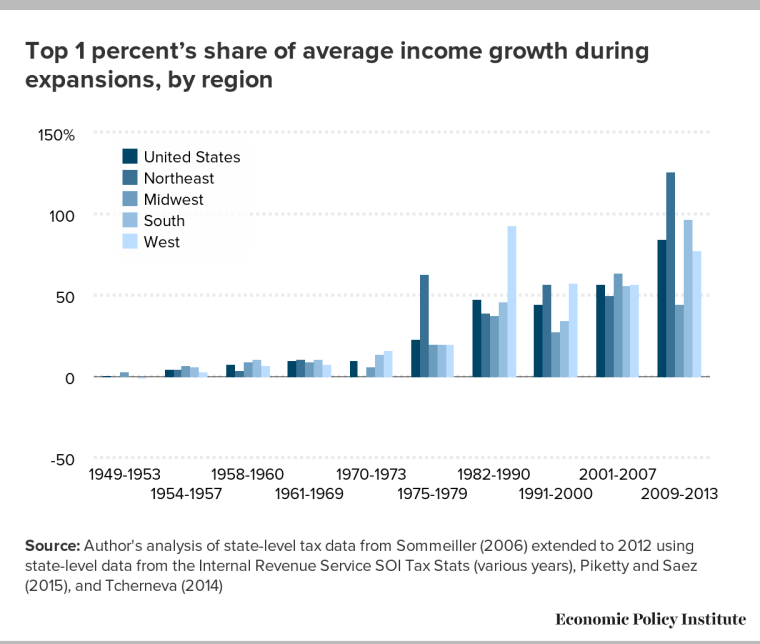One reason so many Americans still feel like they never recovered from the recession is that a significant number never did.
New research finds that most income growth in the recovery benefited the richest Americans, and a large chunk of the 99 percent was completely left behind.
According to a new study from the Economic Policy Institute, just over 85 percent of America’s income gains in the recovery went to the top 1 percent — and it was even worse than that in many states.
“The economy in the U.S. has been growing over time, but the income growth is not being split in a broad way,” said Mark Price, a labor economist at the Keystone Research Center and one of the study’s authors.
Read More: Wealth Gap for Blacks, Latinos at Highest Levels in Over a Decade
In 15 states, 1 Percenters were the only people who saw any income growth between 2009 and 2013. Nationally, that group is defined as a household with an income of a bit under $400,000, but in the most unequal states, even earning half a million dollars a year won’t get you in the 1 percent club.

In Connecticut, it takes an annual income of just under $660,000 to make the 1 percent cutoff. In Washington, D.C., it’s nearly $555,000. New Jersey, Massachusetts and New York also require incomes above $500,000.
The average household income of the 1 percent in Connecticut is around $2.4 million, while the average for the bottom 99 percent is $56,445. The split in New York — which earns the distinction of being the most unequal state by the EPI’s measure — is even larger. Although the top 1 percent earn about $2 million a year, the entire rest of the state pulls down an average of just over $44,000.
Read More: All the 1 Percent Ladies: Wealthy Women Drive Wave of Luxury Travel
Price said a major factor has been the rapid growth in compensation received by company presidents and C-level executives, and the back-from-the-brink recovery in the financial sector.
“The very top is being driven by top executives — CEOs, of course and folks just below the CEO level — as well as folks in the financial sector, banks or hedge funds,” Price said. “You’ve got these combined forces that are driving up incomes at the top.”
By comparison, Price said the flip side to this windfall for the already wealthy is a confluence of factors contributing to widening inequality not just since the recovery, but over the last few decades: Shrinking union membership, minimum wages that haven’t kept up with rising costs of living, and overtime pay rules only changed this year.
“The folks who maybe are working on an assembly line are facing very different conditions,” he said.
